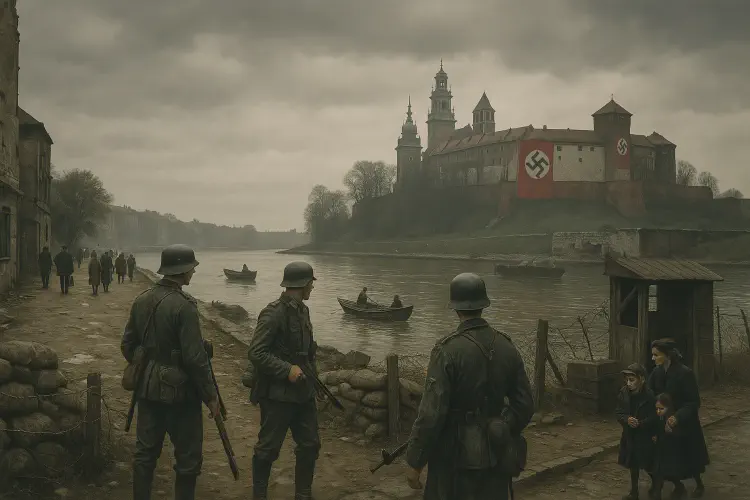World War II history along the river
The Vistula River was not only a natural landmark during World War II but also a witness to some of Krakow’s darkest chapters under Nazi occupation.
- Boat Cruise in Krakow
- 2 min read

Nazi Occupation and the River
When Germany invaded Poland in 1939, Krakow became the capital of the General Government under Nazi rule. The Vistula River, cutting through the city, gained strategic and symbolic importance during this time.
Podgórze Ghetto
In 1941, the Nazis established the Krakow Ghetto in Podgórze, across the Vistula from Kazimierz. The river marked a physical and psychological boundary, separating the ghetto from the rest of the city. Bridges across the river were tightly controlled, restricting Jewish residents’ movement.
Forced Crossings and Control
- Piłsudski Bridge and Other Crossings: These were heavily guarded and used to transport prisoners, workers, and supplies.
- Isolation: The river served as both a barrier and a tool of oppression, cutting off Podgórze from surrounding districts.
Schindler’s Factory and Nearby Sites
Near the river, Oskar Schindler’s factory operated in Podgórze. His story of saving over a thousand Jews is one of the most famous accounts tied to this district, and its proximity to the Vistula connects the river to this narrative of survival.
Destruction and Resistance
As the war progressed, German forces used the river strategically, sometimes demolishing bridges to slow advancing Soviet troops. The Vistula witnessed both occupation control and eventual liberation.
Why It Matters for Cruises
Private cruises passing through Podgórze and Kazimierz provide a quiet but poignant opportunity to reflect on this history. Guides often share stories about the ghetto, Schindler’s factory, and the controlled crossings, linking today’s scenic river journeys with Krakow’s wartime past.
In essence, the Vistula is not only a symbol of trade and beauty but also a silent witness to human suffering and resilience during World War II.
